I love it when it all comes together!
Weaving a strand of learning throughout multiple areas in the curriculum is a smarter way to teach and a more powerful learning experience for students.
Developed through the study of experts like Linda Dorn, Lucy Caulkins, Lori Octzkus, and Debbie Diller with some of my own twists thrown in, this unit aligns to the Colorado state standards.
(Click here for the standards link: ‘Why teach a fairy tales and fable unit?)
(click on the books for more information about each title)
Fairy tales: start with the original version
You may be surprised how many of your students are not familiar with classic fairy tales. I purposely do not use the Disney version of fairy tales because they typically do not appeal to boys. I look for award winning books (because it fits in nicely with our book awards), and versions that are as close to the original Brother’s Grimm fairy tales as possible. The books above are some of my favorite versions.
Let your students in on the ‘secret’ about fairy tales. There are specific structures and patterns that make fairy tales easy to identify and easy to write. Students love it when you let them in on secrets that adult authors use! Use the fairy tale text map to identify these patterns and structures. (click here for the Fairy tale text map)
- Setting— Fairy tales purposely do not reveal a specific setting. They take place ‘long ago,’ ‘far away,’ or ‘once upon a time.’ They do not reveal the time and place so that it can apply to anyone, anywhere. Write the first sentence of the story in the ‘setting’ box to show this vague time and place. My class refers to this as the “Once upon a time . . .” box.
- Main Characters— Fairy tales usually have very clear ‘good guy(s)’ and ‘bad guy(s)’ because the good guys are very good, and the bad guys are very bad. The story reveals this through their appearance, actions, and words. My class refers to this as the “good guys/bad guys” box.
- Problem–The problem in fairy tales are very big problems that usually involve death. For example, in Rumpelstiltskin, if the miller’s daughter does not spin the straw into gold, the king will kill her. In Jack and the Beanstalk if the giant catches Jack he will eat him. My class calls this “A Deadly Problem.”
- Repeated events/words— There is a pattern of 3 that occurs in fairy tales– three little pigs, Goldilocks and the three bears, three times that Jack climbs the beanstalk, and three times that Rumpelstiltskin spins the straw into gold. The discovery of this pattern is always a favorite among students. They always find patterns of 3 that I have never noticed before! We call this “The pattern of 3.”
- Magical Element— Fairy tales always include some sort of magic. We know that fairy tales are fictitious because they contain something magical that could not happen in real life: the fairy godmother in Cinderella, the magic mirror in Snow White, or the frog that was put under a spell in The Frog Prince.
- Solution–Even though fairy tales usually include “a deadly problem,” there is always a way for the “good guy” to avoid it. In Sleeping Beauty the evil fairy casts a spell that will kill Aurora, but one of the good fairies changes the spell to put her to sleep instead. She will wake up if she is kissed by a prince. In Rumpelstiltskin, the queen will not have to give up her child if she can guess his name. We call this, “A Way Out.”
- Ending–Fairy tales always have a happy ending. The ‘good guys’ win and they live the rest of their lives ‘happily ever after.’ For instance, in Rapunzel, she finds her husband, cures his blindness, and they find his kingdom where they will rule as king and queen. In The Three Little Pigs, the third little pig tricks the wolf, has wolf stew for supper, and was never bothered by a wolf again. Write the last sentence (or few sentences) in the “Ending” box to show how the good guy wins and the rest of his life is happy. My class refers to this as “Happily Ever After.”
Fables
Fables are similar to fairy tales, but they have some distinctive differences in their patterns and structures. (Click here for the Fable Text Map)
- Moral/Lesson: Fables teach a lesson that the reader has to infer because the story usually doesn’t come right out and tell you, which means the ending is not always a happy one. For example, the moral in Henny Penny is ‘don’t believe everything you hear,’ and she and her friends get eaten in the end. In The Magic Fish, the moral is ‘don’t be greedy’ and the fisherman’s wife loses all the wishes she was granted.
- Character/Trait: The characters in fables are almost always animals. In order to make the lesson more powerful, fables use animals to avoid pointing the blame at a certain kind of person. Instead, the animal has a distinctive trait that the reader can relate to. For instance, Henny Penny is easily fooled, the fox is clever, the Little Red Hen shows a lot of perseverance, and the dog, cat, and pig are lazy.
- Problem: There is an obvious obstacle in fables that the main character has to overcome. The three billy goats gruff have to get over the bridge to get to the grass on the other side, the little red hen needs to make the bread, the frogs in It’s Mine! have to find a safe place to sit during the thunderstorm.
- Solution: This is how the story is wrapped up. Use the ending to help you infer the moral to the story.
Author/Illustrator Study
Award winning author and illustrator Leo Lionni is considered a modern day fable writer. His main characters are critters that he was fascinated with as a child such as frogs, lizards, mice, and fish. The morals are easy for children to relate to.
 -Swimmy: teamwork (swimmy video)
-Swimmy: teamwork (swimmy video)
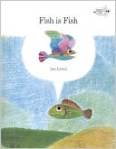 -Fish is Fish: the grass is not always greener on the other side
-Fish is Fish: the grass is not always greener on the other side
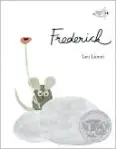 -Fredrick: everyone has something important to contribute to the group (Frederick video)
-Fredrick: everyone has something important to contribute to the group (Frederick video)
-Alexander and the Wind-Up Mouse: caring, selflessness
Standing on the shoulders of Leo Lionni, students can write fables using the same kind of characters and morals. They can also illustrate their stories using collage in the same style as Leo Lionni.
Paint blank white paper earthy colors using different textures and brush strokes. (I did some of the painting myself. I also sent an email home asking for students to paint plain white paper at home and bring it in for our collages. It seemed too messy to let the kids do it in class!) Using these painted papers, students can cut and tear the characters for their stories or poems. Click here for a video from Leo Lionni on how to make a mouse.
Fractured Fairy Tales
Fractured fairy tales are different versions or different view points of original fairy tales. Most kids are familiar with the word ‘fracture’– they know it means to break something (because it has usually happened to at least one of them!). That’s how I explain fractured fairy tales to students. Using the same patterns and structures as the original fairy tales, one piece on the fairy tale text map is “broken” and changed. For example, in the story The Tortoise and the Jack Rabbit, the setting was “broken” and changed to take place in the desert. That caused a ripple effect in the rest of the story. The character had to be changed into a jack rabbit to fit the desert setting. The same fracture happens in the setting of different Cinderella stories around the world. The country where it takes place is “broken” and changed which causes a ripple effect culturally throughout the story. In the story The Three Little Wolves and the Big Bad Pig, the characters were “broken,” and the “good guys” and the “bad guy” were reversed. Fractured fairy tales are fun stories for kids to read and write. It gives them an opportunity to do some creative synthesizing using the structures and patterns they’ve learned about fairy tales.
Guided & Independent Practice
After reading aloud different fairy tales, fables, fractured fairy tales and modeling how to fill out the text map, let your students try it. Using easy to read versions of the same fairy tales and fables you have modeled will help make these stories more accessible to everyone in your class. Students can read these stories and fill out their own fairy tale text map. Eventually they can use fairy tales and fables you haven’t already read to them. Here are some easy to read stories that I like to use:
I included e-books from Evan Moor in my list of easy to read fairy tales and fables. One book includes 8 different fairy tales and fables that are written at a 2nd-3rd grade reading level. The other e-book includes 7 fairy tales and folktales written for a K-1 audience. They are printable stories that include activities with each story. Although I would not use all the activities included in these books, I thought it was worth purchasing for the printable stories and the puppet templates.
Felt Board Center: During our fairy tales and fables unit, I include easy to read and familiar fairy tales and fables with felt characters. At this ILA (independent literacy activity) students reread one of their favorite stories, then retell it using the felt characters.
Buddy Reading Center: I make/collect multiple copies of familiar fairy tales so students can read them together. I also include reader’s theater fairy tale plays so students can practice reading different parts.
Listening center: Students listen to fairy tales and fables from an audio book. You can easily create your own audio books and include a guided lesson! Check out Listening Center Plus for more information. Click here for a sample of The Three Little Pigs.
Library Center: Students reread the fairy tales and fables you read aloud to the class and fill out their own fairy tale or fable text map.
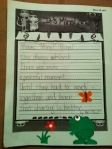 Writing Center: Students write their own fairy tales or fables using the
Writing Center: Students write their own fairy tales or fables using the 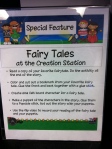 text maps to plan out their story before they begin writing. They can also write a poem about a character in one of the stories you have been studying.
text maps to plan out their story before they begin writing. They can also write a poem about a character in one of the stories you have been studying.
Creation Station: Students create puppets for their favorite fairy tale or fable and use them to retell the story. In the style of Leo Lionni, students can cut and tear characters using painted paper to construct their characters (see the example on the left).
All of these activities can be recorded on video or a podcast for students to share. See the Make Them Movie Stars post for more ideas.
Cross-Curricular Collaboration
Don’t forget to collaborate with your specials teachers when you have a big unit of study, so they can link their expertise as well. Talk to your art teacher about illustrating like Leo Lionni. Our art teacher has a Leo Lionni unit that she teaches which covers how to create collages in a much more comprehensive way than I ever could. Our music teacher has a play that the students perform based on the book Swimmy by Leo Lionni. The librarian and computer lab teacher will be able to create a lot of connections for your students as well.
Wrapping Up the Unit
Now that your students have become experts on fairy tale and fable structures, it’s time to celebrate with a fairy tale ball!
Start by having students send a formal invitation to their families. Thanks to the creativity of some parents in my classroom, the students crinkled up invitations printed on brown paper to make it look old and worn, then (the parent helpers) hot glued sticks to the top and bottom of the invitation to make it look like a scroll. The students rolled it up, tied it with a string, and brought home their fancy invitations for their families.
Next have your students prepare the entertainment at the fairy tale ball. The activities that they did during ILAs (independent literacy activities) such as retelling stories with felt board characters and the puppets that they created, reading reader’s theater plays at the buddy reading center, writing their own fairy tales, fables, and poems at the writing center, and the Swimmy play they learned in music make great entertainment for the fairy tale ball! This year we are video taping all these activities (rather than making it a live performance) so we can all watch them together. We are hoping that it will make orchestrating the entertainment a little less stressful on the day of the big ball!
Contact parents for help organizing food and decorations for the big feast. Try having a fairy tale feast theme with (plastic) goblets, chicken wings, and fairy tale napkins! Click here for some ideas on making a fairy tale feast and decorating medieval style.
On the day of the fairy tale ball, be sure to have everyone dress in their fanciest clothes. Take pictures of the families for a wonderful keepsake of this special celebration! (Check back soon for more pictures of the latest fairy tale ball)


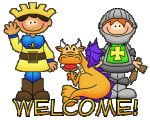


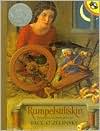
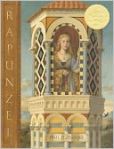
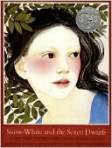

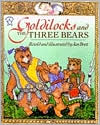

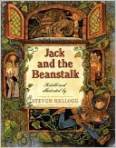
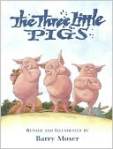
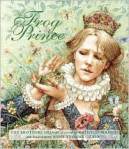


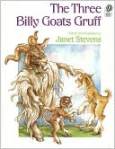
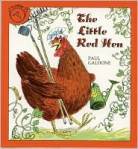
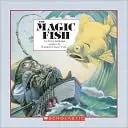
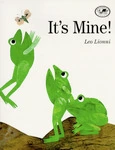
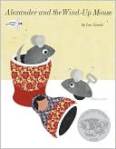
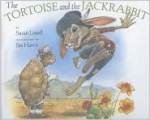
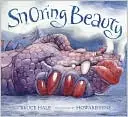

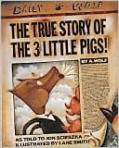
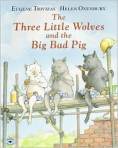



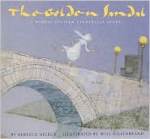
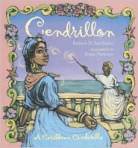

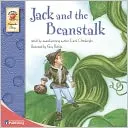

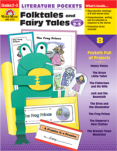
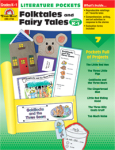



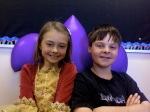
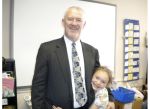
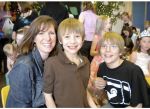

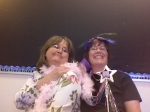

This is EXCEPTIONAL, Emily! You are really creating an incredible resource with this site! Phenominal post! Thank you!
Thanks Rebecca! Please feel free to share it with anybody you know who may be able to use it. Thanks so much!
I really enjoyed reading this post… Very interresting and extremely informative!
Thanks mom!
Thanks for posting this, great idea!
I am actually pleased to glance at this weblog posts which carries plenty of valuable
information, thanks for providing such data.
I’m not that much of a online reader to be honest but your sites really nice,
keep it up! I’ll go ahead and bookmark your site to come back later on. Many thanks